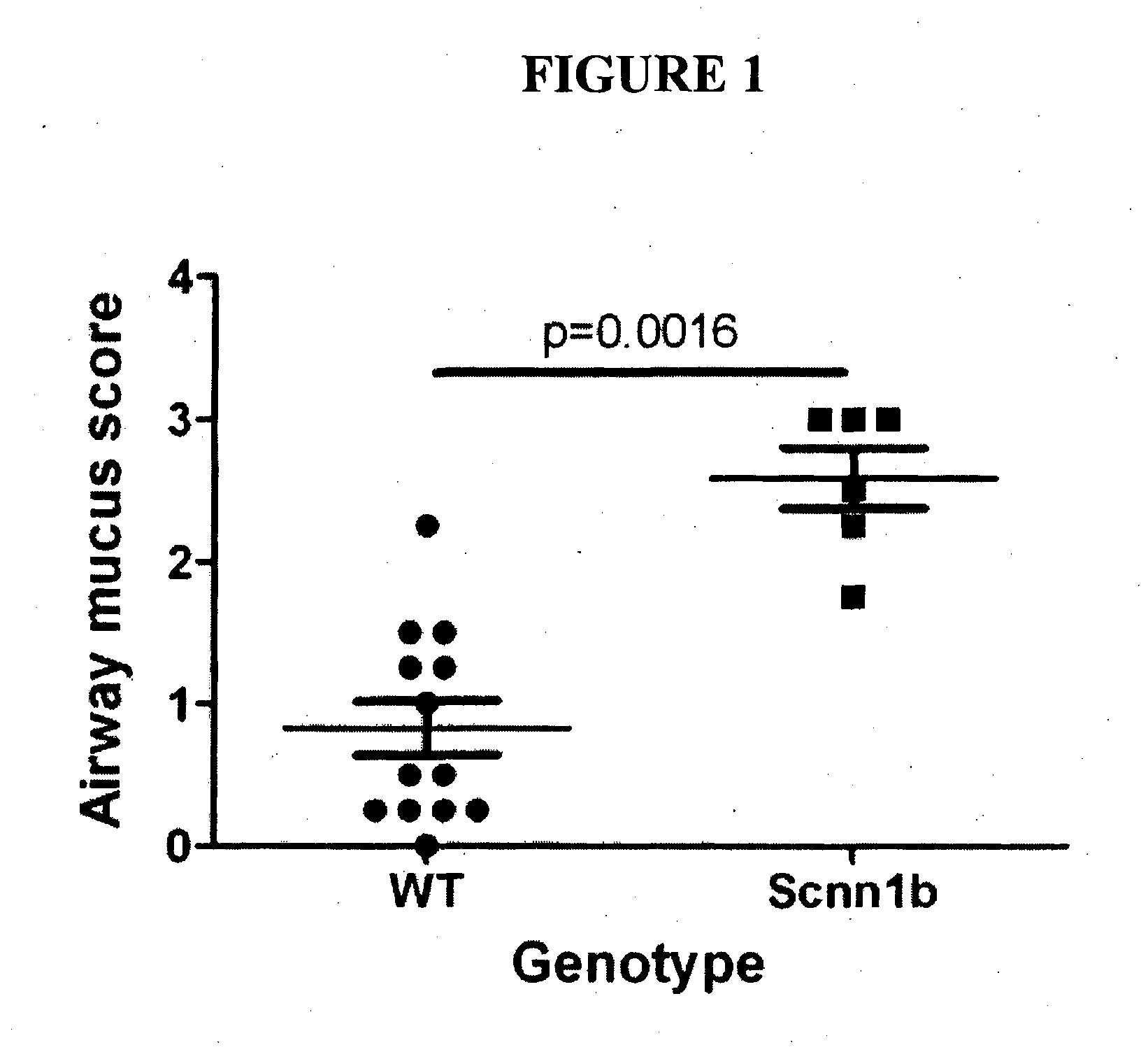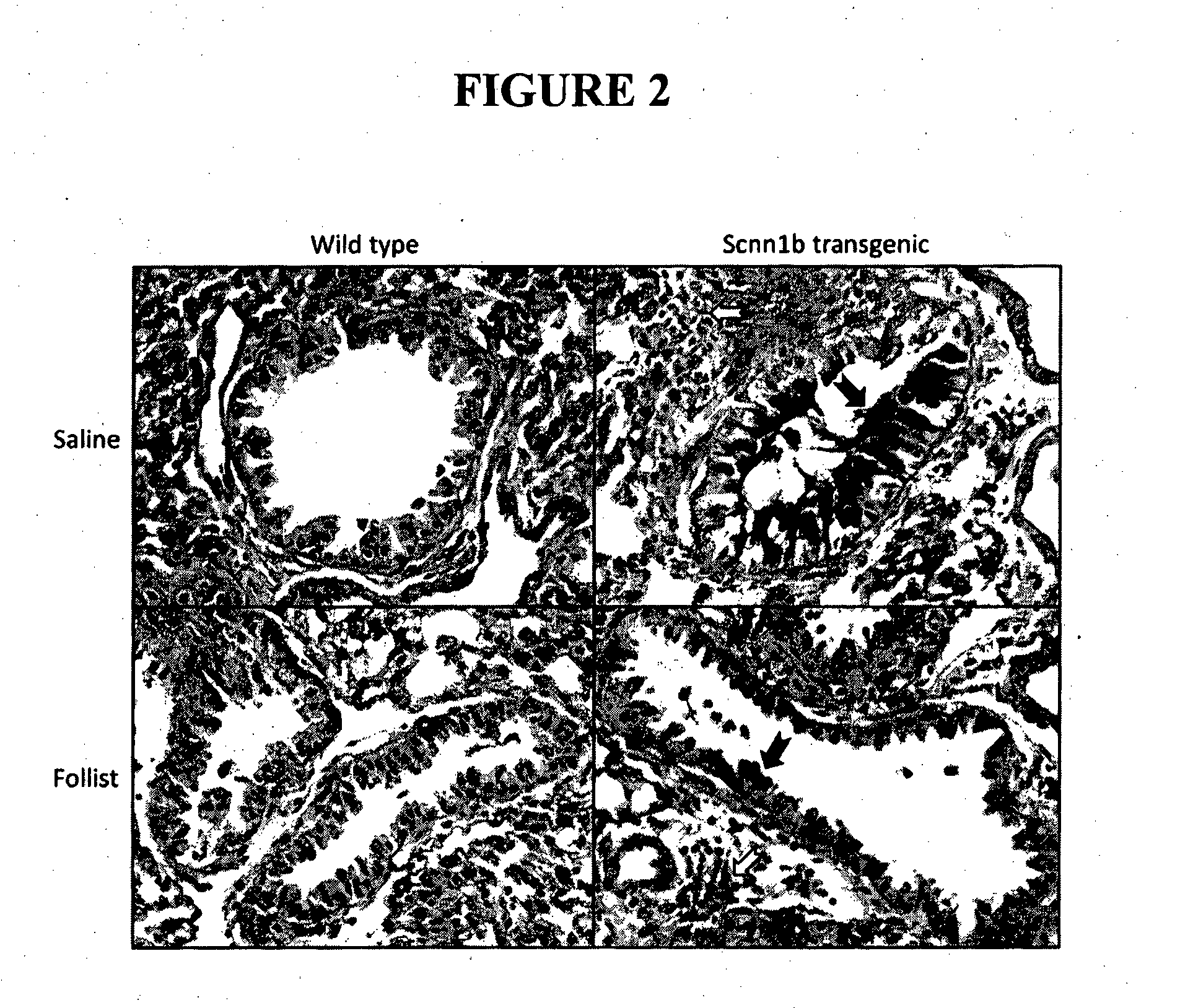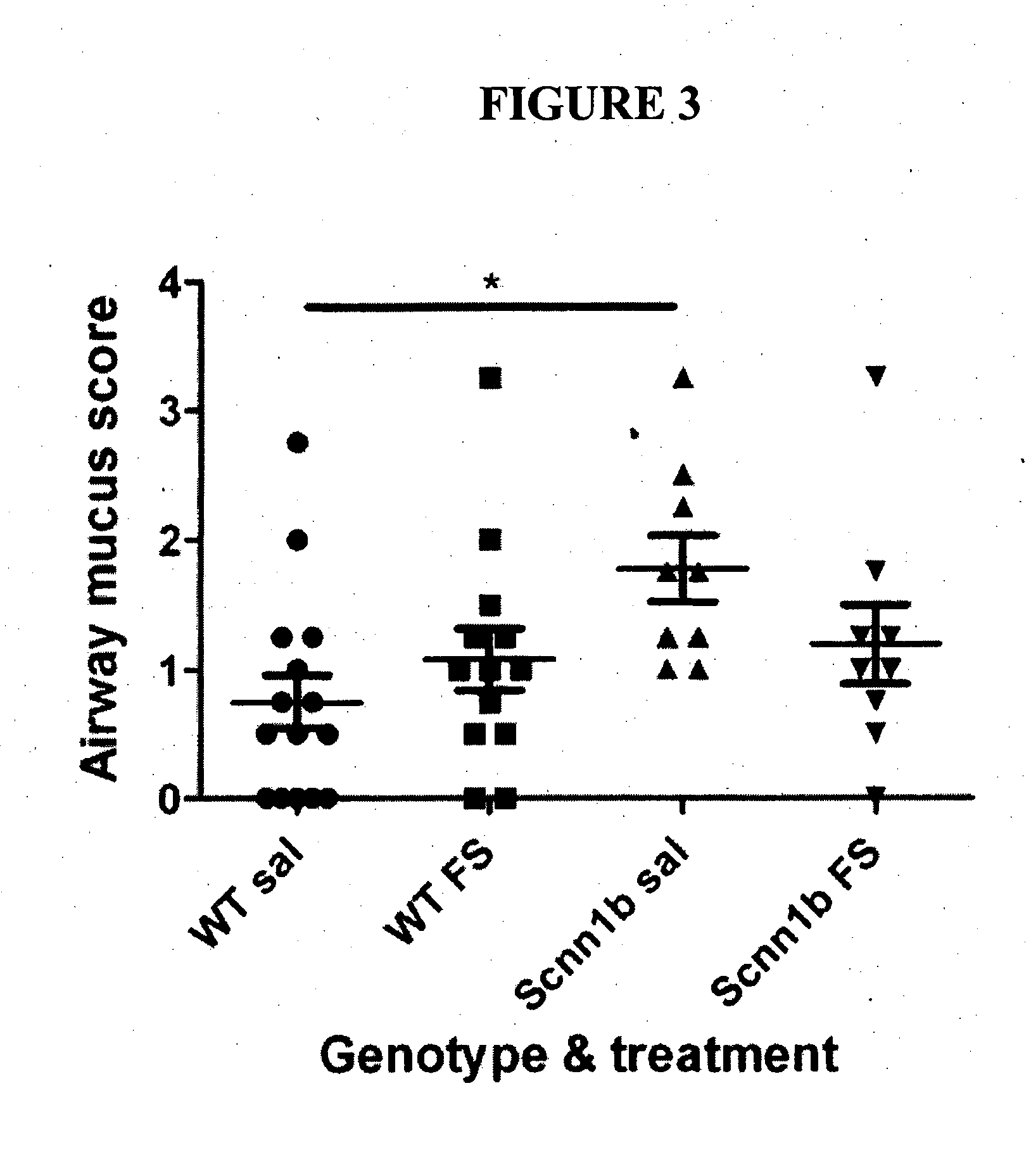Method of treating mucus hypersecretion
a technology of mucus and hypersecretion, applied in the direction of animal/human peptides, biocide, peptide ingredients, etc., can solve the problems of retaining mucus, hypersecretion contributes significantly to patient morbidity and mortality, infection and inflammation, etc., to reduce reduce the functional level of activin, and reduce the effect of airway tissue mucus hypersecretion
- Summary
- Abstract
- Description
- Claims
- Application Information
AI Technical Summary
Benefits of technology
Problems solved by technology
Method used
Image
Examples
example 1
Breeding and Characterisation of Cystic Fibrosis Mice
[0133]The Scnn1b (also known as βENaC) transgenic mice, which develop cystic fibrosis-like disease, were successfully imported, and mated to a second line of mice (a cross between C57BL / 6×C3H / HeJ strains). Both lines bred well. Scnn1b mice develop the expected phenotype, with 40-50% of transgenic mice dying by 21 days of age. Scnn1b mice also show the expected lung pathology (Mall et al., 2004, Nature Med. 10:487-493), with excessive mucus production in the lung airways as reflected in an increased mucus production score compared to normal mice (FIG. 1).
Effect of Follistatin Treatment on Lung Disease
[0134]Litters of newborn mice were randomly assigned to either follistatin treatment or saline control groups. Mouse pups received follistatin or saline via the intranasal route, every 2nd day, from 3-21 days of age. A dose of 250 μg / kg was used throughout the studies described herein. Mice were weighed daily, and the follistatin conce...
PUM
| Property | Measurement | Unit |
|---|---|---|
| body weight | aaaaa | aaaaa |
| molecular weight | aaaaa | aaaaa |
| viscoelasticity | aaaaa | aaaaa |
Abstract
Description
Claims
Application Information
 Login to View More
Login to View More - R&D
- Intellectual Property
- Life Sciences
- Materials
- Tech Scout
- Unparalleled Data Quality
- Higher Quality Content
- 60% Fewer Hallucinations
Browse by: Latest US Patents, China's latest patents, Technical Efficacy Thesaurus, Application Domain, Technology Topic, Popular Technical Reports.
© 2025 PatSnap. All rights reserved.Legal|Privacy policy|Modern Slavery Act Transparency Statement|Sitemap|About US| Contact US: help@patsnap.com



